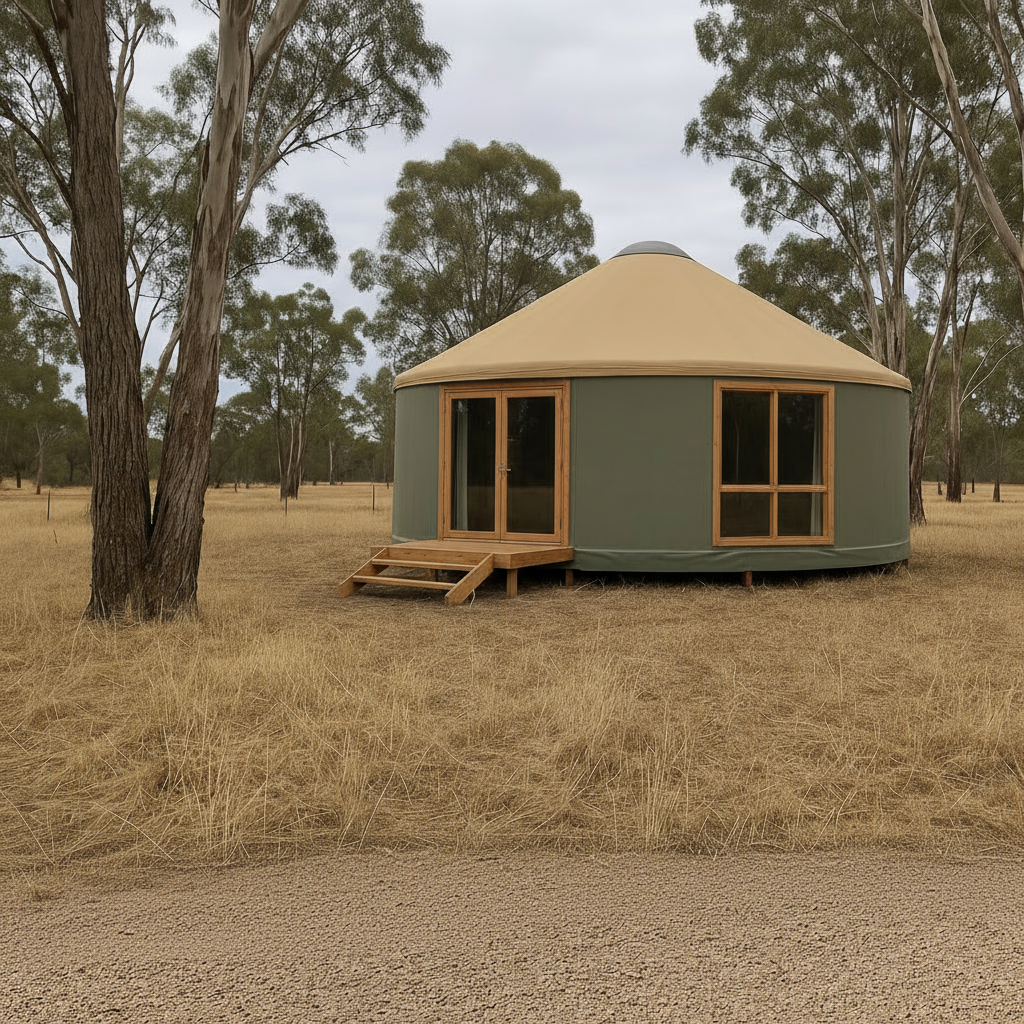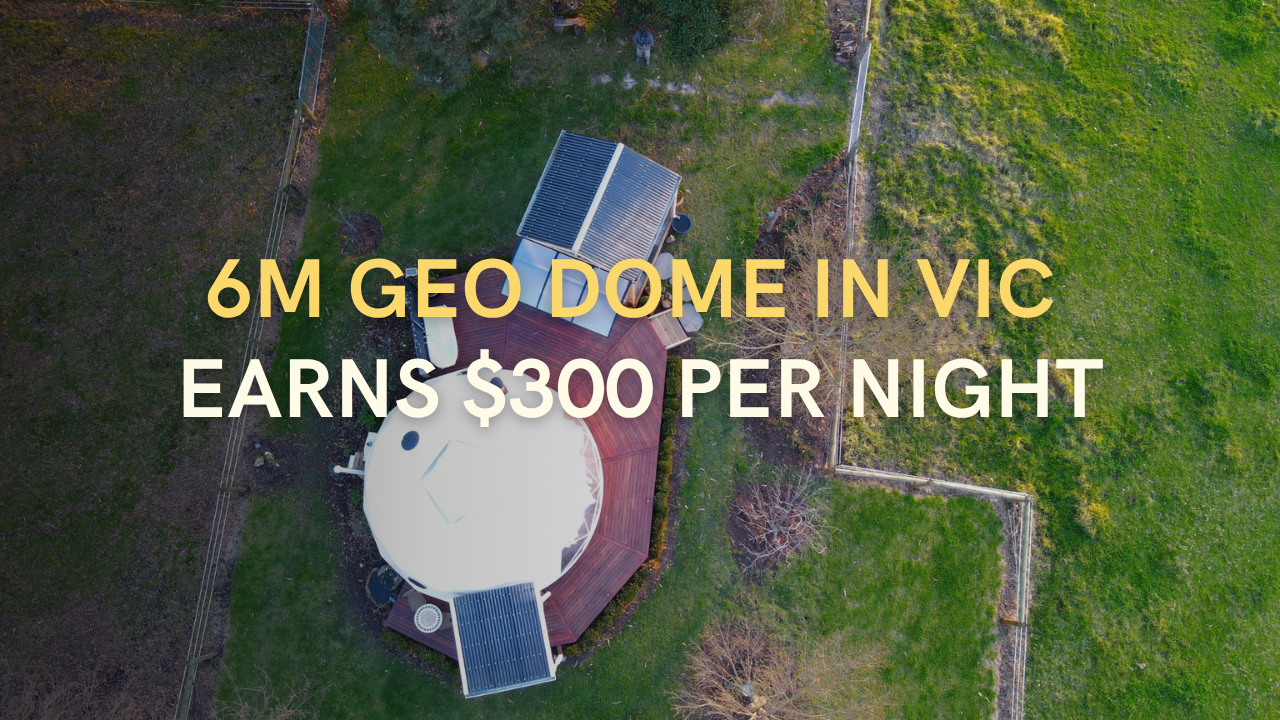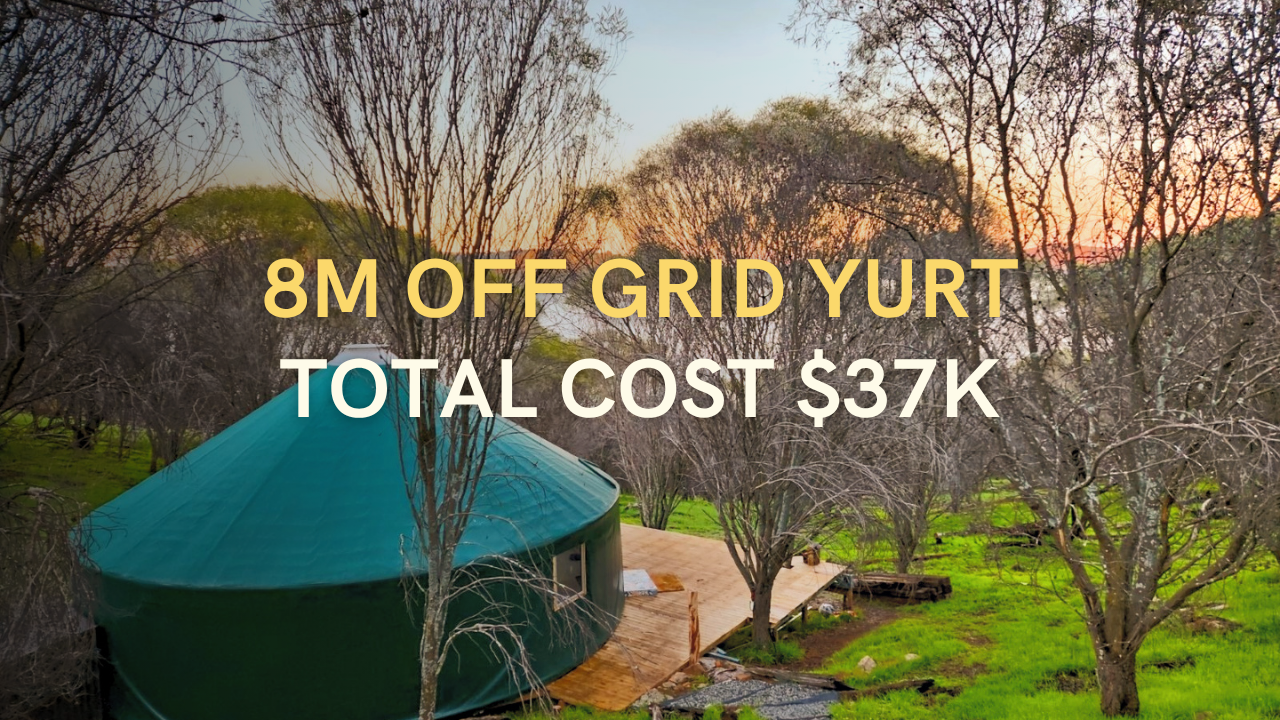What is a yurt? If you’ve stumbled across this ancient dwelling concept while researching alternative accommodation or sustainable living options, you’re not alone. A yurt is a portable, circular dwelling that has evolved from traditional nomadic shelters into modern, versatile structures perfect for Australian conditions.
The word “yurt” derives from the Old Turkic languages, meaning “homeland” – essentially describing a place where you live and eat. Traditional yurts are comparable to igloos, which in the Inuit language described “a home built of any material.” However, if you’re reading this guide, you’re likely interested in learning about modernised yurts and whether they could be a suitable replacement for other forms of accommodation or living spaces on your Australian property.
In this comprehensive guide, we’ll explore everything you need to know about yurts – from their fascinating history to their modern applications, costs, and why they’re becoming increasingly popular across Australia and New Zealand for everything from glamping businesses to off-grid homes.
Key Takeaway
A yurt is a circular, portable dwelling that has evolved from ancient nomadic shelters into modern, versatile structures suitable for Australian and NZ conditions. Whether you’re seeking affordable housing, unique accommodation, business opportunities, or sustainable living solutions, yurts offer compelling advantages with 15-25 year lifespans and proven performance in harsh weather.
What Is A Yurt? Definition and Origins
A yurt is a portable, round tent-like structure traditionally covered with animal skins or felt and used as a dwelling by nomadic peoples of Central Asia. The modern yurt definition has expanded to include contemporary versions made with advanced materials, designed for permanent or semi-permanent installation.
Traditional Yurt History
For over 3,000 years, nomadic tribes across Mongolia, Kazakhstan, Kyrgyzstan, and other Central Asian regions have relied on yurts as their primary shelter. These remarkable structures were designed to be:
✅ Traditional Design Principles
- Portable: Assembled and disassembled quickly for nomadic lifestyle
- Durable: Withstanding harsh weather conditions including extreme winds and snow
- Practical: Providing comfortable living space while remaining lightweight
- Sustainable: Made entirely from natural, locally-sourced materials
🏗️ Engineering Genius
- Circular shape distributes wind loads evenly
- Flexible lattice walls move with strong winds
- Central compression ring provides structural integrity
- Aerodynamic design proven over thousands of years
Modern Yurt Evolution
Today’s yurts have evolved significantly from their traditional origins while maintaining the core principles that made them successful. Modern yurts incorporate contemporary materials and design techniques that cater to the demands of contemporary life while paying homage to their nomadic heritage.
Modern vs Traditional Yurts: A Comprehensive Comparison
Understanding the differences between traditional and modern yurts helps illustrate how this ancient dwelling has adapted for contemporary Australian and NZ living. Here’s a detailed comparison of key features:
| Feature | Traditional Yurts | Modern Australian Yurts |
|---|---|---|
| Cover | Animal skins or felt, offering basic protection from elements | Durable, waterproof, UV-resistant double-coated PVC canvas for enhanced longevity and protection against Australian sun |
| Wall Frame | Wooden lattice, providing structural support and flexibility | Bamboo lattice and aluminium frames with top and bottom aluminium channels, combining traditional flexibility with modern strength |
| Roof Frame | Wooden poles or bamboo, supporting the roof and central crown | Structural pine beams extending from wall frame to central supporting ring, offering robust support with nod to traditional designs |
| Skylight | Typically absent, with light entering through door or smoke hole | Clear polycarbonate dome skylight, introducing abundant natural light into the interior |
| Ventilation | Openings at the top (smoke hole) or through doorways | Whirly bird style ventilation, ensuring efficient airflow and expulsion of hot air and condensation |
| Windows | Few or none, with openings covered by fabrics for light and air | One small cantilever window of glass and aluminium, providing controlled light and ventilation |
| Door | Simple fabric or wooden doors, basic in design | Fir wood double door with fixed glass panels, lock and keys, blending security with aesthetic appeal |
| Insulation | Felt or skins used for warmth, requiring additional layers in colder climates | Felt insulation between inner lining and outer cover, optimising for warmth in winter and coolness in summer |
| Interior | Plain or with minimal decoration, focusing on functionality | Light coloured patterned fabric interior liner, creating beautiful ambience inside the yurt day and night |
| Installation | Assembled by community, using available materials and traditional methods | Includes anchor kit and fixings for installation; requires suitable base structure, reflecting modern precision in setup |
How Yurts Handle Australian Weather Conditions
One of the most common questions about yurts in Australia and NZ is: “Can they handle our extreme weather?” The answer is a resounding yes. Modern yurts are designed with harsh climates in mind, ensuring they stand up to diverse weather conditions from torrential rains to heat waves and gusty winds.
🌧️ Rain Protection
Durable, waterproof, UV-resistant double-coated PVC textile cover effectively repels water, keeping interiors dry during Queensland’s wet season or Tasmania’s winter storms.
💨 Wind Resistance
Circular design with bamboo lattice and aluminium frames provides strength while maintaining flexibility – allowing movement with wind rather than fighting against it.
🔥 Heat Management
Whirly bird ventilation, felt insulation, and UV efficient colours for the outer cover work together to maintain comfortable temperatures even in hot conditions.
Heat Management Features
Whirly Bird Ventilation
Takes advantage of any breeze to expel hot air and prevent condensation
Felt Insulation
Provides thermal barrier between inner and outer layers
UV efficient Cover
UV-resistant materials help reflect heat away from the structure
Natural Airflow
The circular design promotes air circulation throughout the space
What Can Yurts Be Used For? Applications and Sizes
Yurts offer a versatile and eco-friendly solution for various needs, blending seamlessly into different Australian & NZ landscapes and purposes. From cozy retreats to functional workspaces, the adaptability of yurts is unmatched.
Yurt Size Options & Applications
For detailed information about yurt construction and materials, read our comprehensive guide on what is a yurt made of.
Cost Analysis: What Does a Yurt Cost in Australia & NZ?
Understanding the true cost of yurt ownership involves more than just the initial purchase price. Here’s a comprehensive breakdown that will help you budget for your yurt project. For the most current pricing and detailed cost breakdowns, check our complete yurt cost guide.
Additional Costs to Consider
Platform/Foundation
Depends on size, materials, site conditions and whether you can DIY with our provided decking plans
Site Preparation
Clearing, leveling, and access preparation
Utilities Connection
Electrical, plumbing, internet, solar systems
Interior Fitout
From basic minimalist fitouts to Luxury Glamping Accommodation
Ready to Start Your Yurt Journey?
Take advantage of our current $500 discount offer on all yurt kits. Our Australian-designed yurts are made for local conditions and backed by great customer support and warranty.
Download our free Yurt Buyer’s Guide for detailed specifications, pricing, and planning information.
The Benefits of Yurt Living
🌱 Environmental Benefits
- Minimal foundation impact
- Simple materials
- Energy efficiency
- Smaller footprint
- Reversible impact
💰 Economic Advantages
- Lower upfront costs
- Reduced ongoing costs
- Energy savings
- Income potential
- Faster ROI
🏡 Lifestyle Benefits
- Connection to nature
- Simplified living
- Unique experience
- Flexibility
- Community
Planning Your Yurt Project in Australia or NZ
Site Selection and Preparation
Choosing the right location for your yurt is crucial for both practical and legal reasons:
Site Requirements:
- Level or easily leveled ground
- Good drainage to prevent water pooling
- Access to utilities if required
- Consideration of prevailing winds and sun orientation
- Compliance with local council requirements
Foundation Options:
- Timber deck platform (most common)
- Concrete pad (permanent installations)
- Gravel pad with suitable anchoring
- Raised steel-framed platform
- Value sustainability and environmental responsibility
- Seek affordable housing or accommodation solutions
- Want a unique, conversation-starting living space
- Appreciate connection to nature and outdoor living
- Are interested in minimalist or simplified living
- Need flexible, multi-purpose space
- Want to start an accommodation business
- Require extensive storage space
- Prefer traditional rectangular room layouts
- Need multiple separate rooms for privacy
- Are restricted by strict council regulations
- Require maximum sound insulation
- Prefer low-maintenance housing options
Conclusion: Is a Yurt Right for You?
A yurt represents more than just an alternative dwelling – it’s a lifestyle choice that connects you with thousands of years of human ingenuity while embracing modern sustainability and functionality. Whether you’re seeking an affordable housing solution, a unique accommodation business opportunity, or simply a connection to simpler living, yurts offer compelling advantages.
The question “what is a yurt?” has a simple answer: it’s a circular, portable dwelling that has evolved from ancient nomadic shelters into modern, versatile structures perfect for Australian conditions. But the real question is whether a yurt aligns with your lifestyle, budget, and goals.
✅ Consider a yurt if you:
❌ A yurt might not be suitable if you:
The Australian yurt market is experiencing significant growth, with increasing acceptance from councils and growing demand from consumers. Now is an excellent time to explore yurt options, whether for personal use or commercial opportunities.
Ready to explore your yurt options? Browse our client build stories to see real Australian yurt projects and get inspired for your own yurt journey.
Get Started Today
Contact Yurt in the Dirt to discuss your specific needs and explore our range of yurts.
0 Comments
Share












